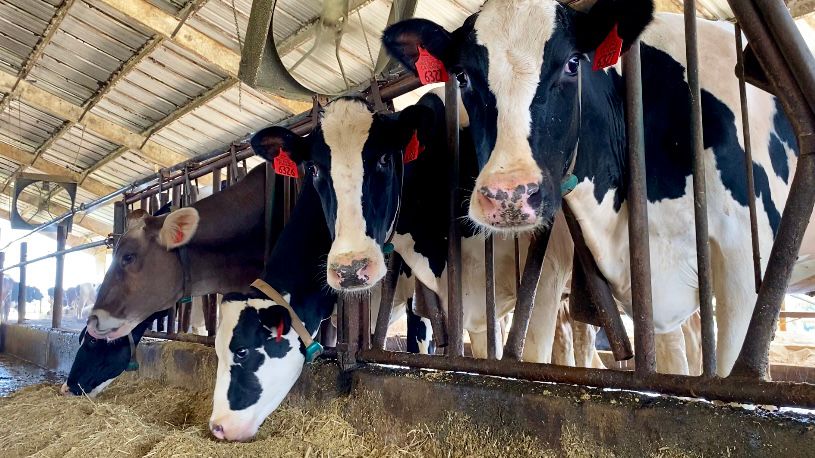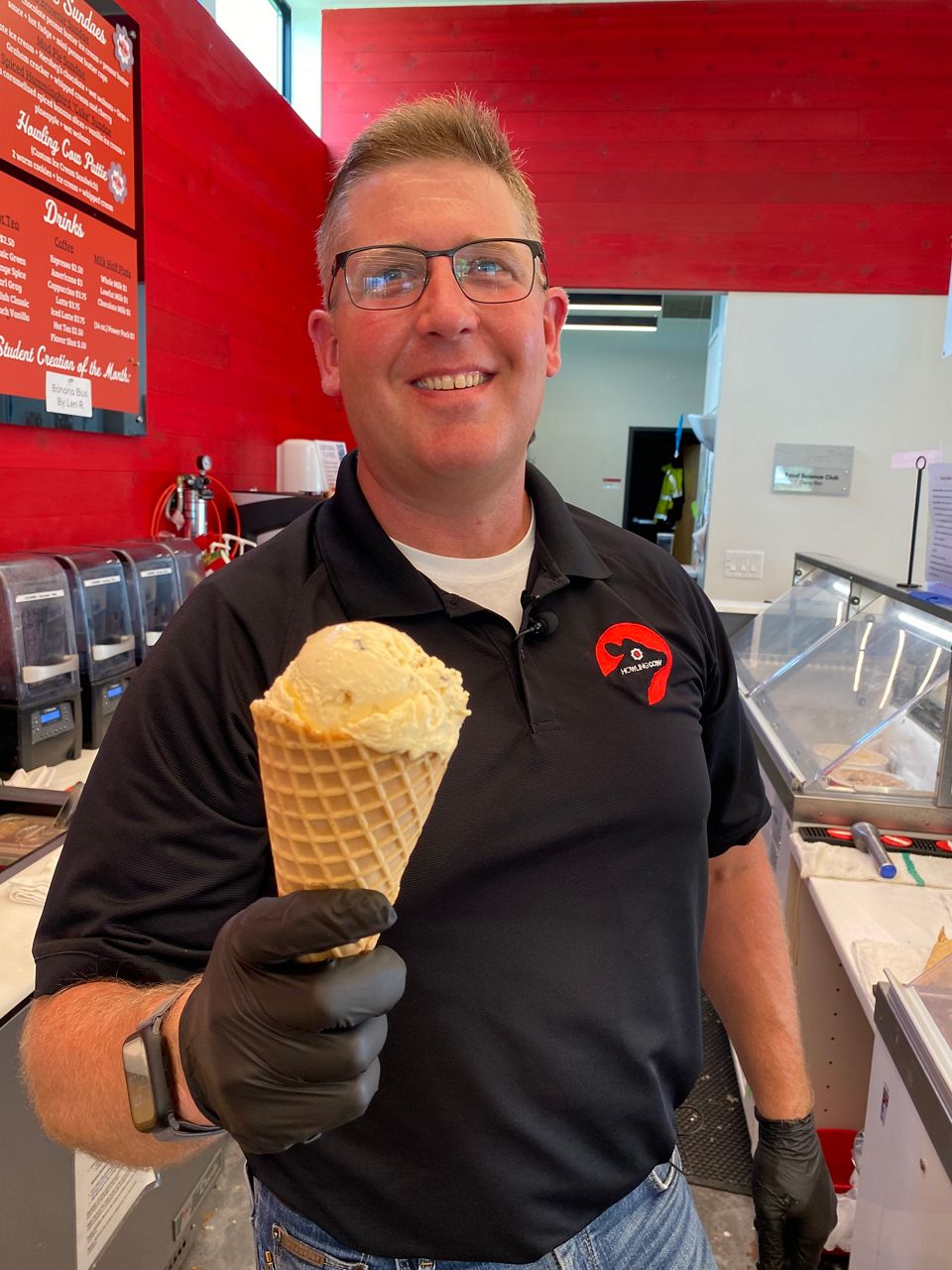RALEIGH, N.C. — N.C. State University's fully operational dairy farm is known for its delicious ice cream and its efforts to build a transparent dairy industry the public can get behind.
When you're in downtown Raleigh you may not be able to see any evidence of N.C. State's farms on Lake Wheeler Road, but Alex Ives can see the tops of the skyscrapers every day as he reports to work at the Dairy Education Center and Creamery.
“We're generationally detached from our food. Lots of people go to the grocery store and get food, and we eat and we're healthy, but a lot of people don't know the process behind what it takes to produce that food,” Ives said.

Howling Cow has locations closer to downtown, but none can boast a porch full of rocking chairs overlooking the pasture full of cows who supplied the milk to make the ice cream patrons so enjoy. They have just over 300 animals on the farm, including the calves who have yet to enter the milking rotation.
“They don't get to spend very much time with their moms at all, and there's a couple reasons for that, and it's really safety-related,” Ives said. “The reason we keep them in individual hutches is to give them individual attention so we can make sure they're eating enough and drinking enough.”
Each cow eats more than 100 pounds of feed and drinks 50 gallons of water each day. Ives said they'll also spend about 12-14 hours of each day lying down in the barn relaxing. Dairy farming goes back in his family for generations, so he's no stranger to the inside of a milking parlor where it takes four to eight minutes to milk a cow.

“You wouldn't be able to really hand milk a cow and have it be a sustainable business like it was in my grandfather's time in the early 1900s,” Ives said. “Students are involved in the operation seven days a week, 365 days a year. We milk our cows at 6 a.m. and 6 p.m. We feed our cows, that's a full time job — usually takes about 7-8 hours to feed our cows.”
A cow will spend about 6-10 years in the herd at the dairy farm and after that they become a food resource in another way – beef. Ives said 30% of the beef in the United States comes from former dairy cows.
“The Holstein cow is the most popular breed of dairy cow, that makes up about 90% of the dairy cows in the United States,” Ives said.
Through their tours and field trips, he works to combat the misconceptions that so often shroud the dairy industry. Ice cream makes the perfect bait, but education is the real goal.
“I want to make sure that everybody has a good clear understanding that we've got to take care of our farms, we've got to take care of our farmland, we've got to make sure that we keep feeding ourselves,” Ives said. “The dairy industry really needs everybody to have an understanding of what it takes to get a gallon of milk into your refrigerator.”










